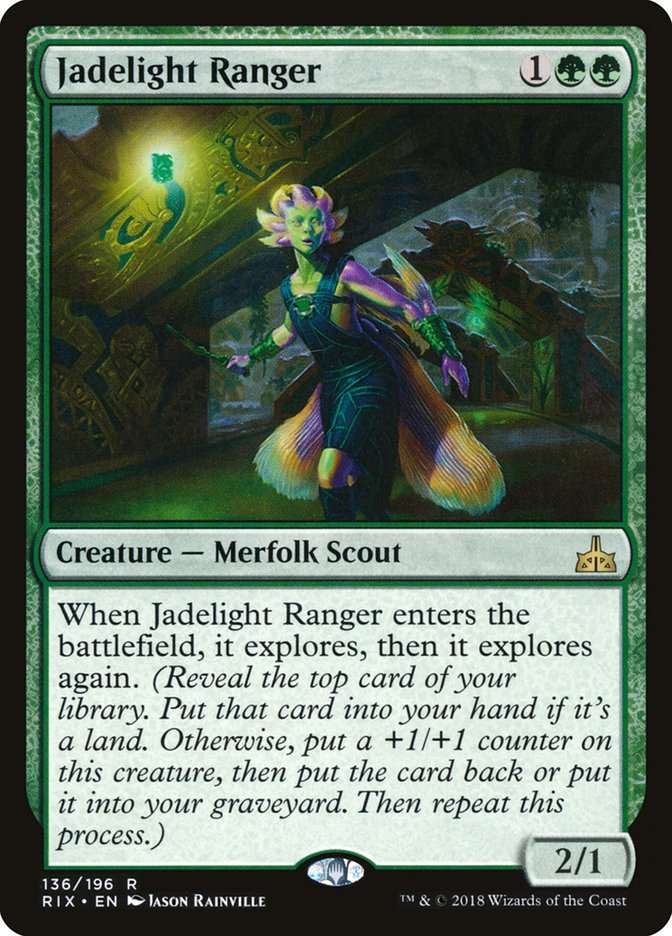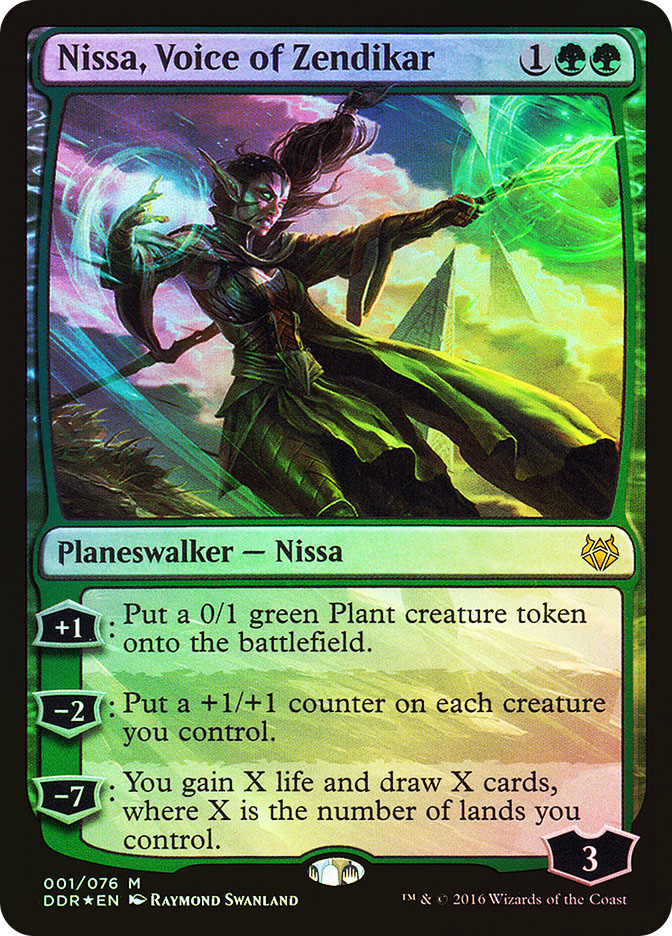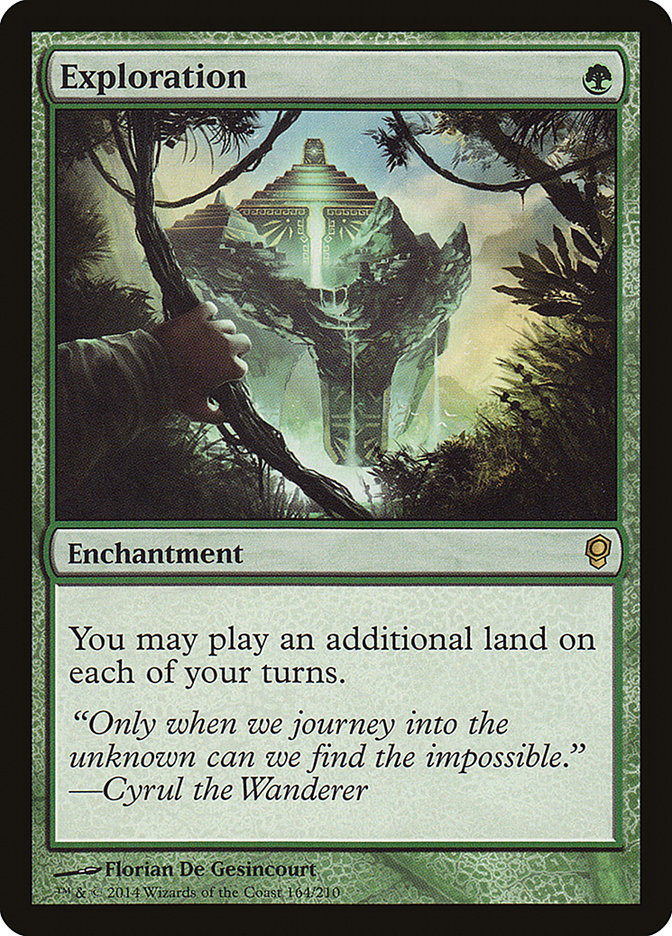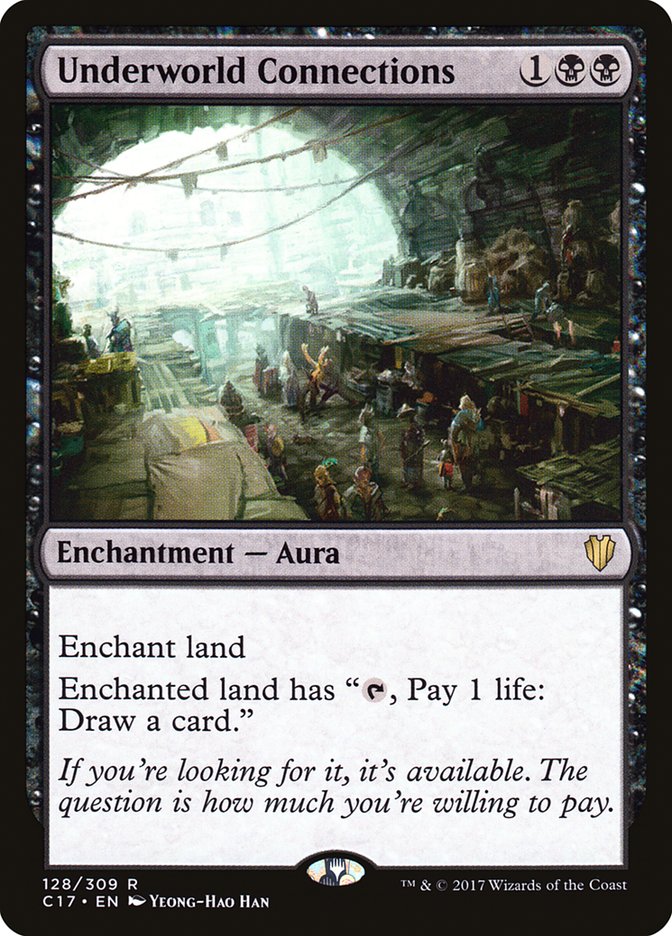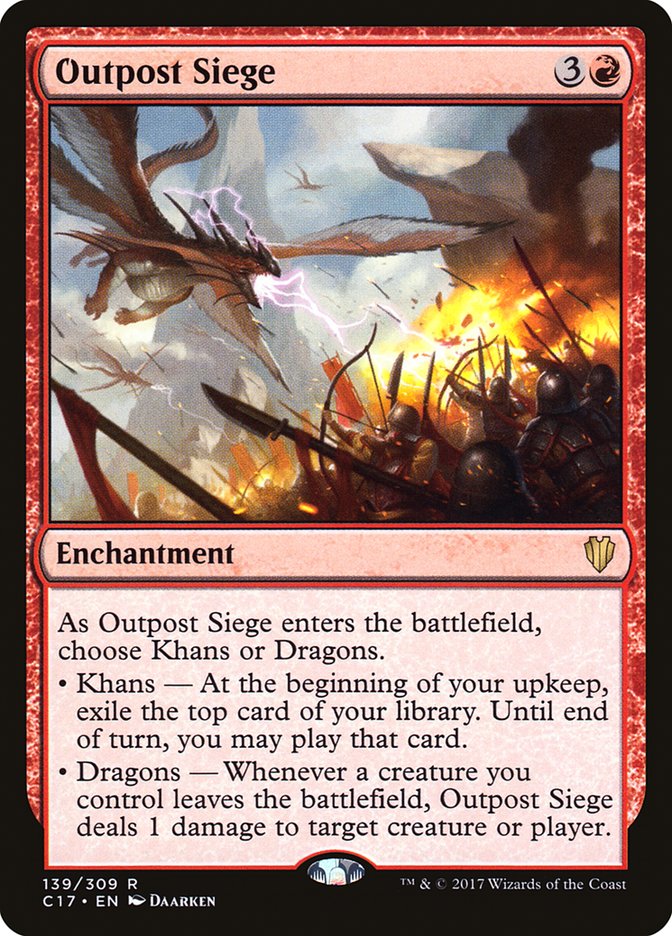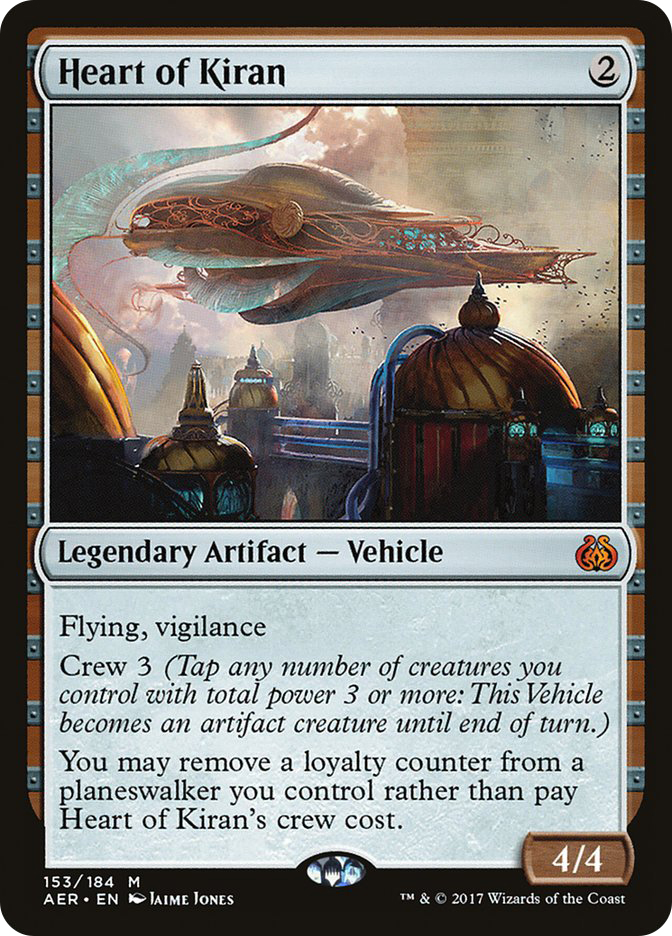Last weekend, I was a full-fledged competitor in SCG Philadelphia as the
Standard head of an excellent squad. And then in the Standard Classic the
next day. And then in the surprisingly competitive endeavor of finding a
good vantage point from which to watch Emma Handy clinch yet another
Classic top 8.
My weapon of choice was G/B Constrictor, and if the above didn’t make it
clear, I didn’t do very much winning. My list looked a lot like this:
Creatures (26)
- 3 Verdurous Gearhulk
- 4 Winding Constrictor
- 2 Rishkar, Peema Renegade
- 4 Glint-Sleeve Siphoner
- 4 Walking Ballista
- 3 Merfolk Branchwalker
- 4 Jadelight Ranger
- 2 Ravenous Chupacabra
Lands (24)
Spells (10)

I was very excited to get the band back together, so to speak, and play
with Winding Constrictor and Walking Ballista again. That excitement slowly
drained out of me as the weekend rolled on until I was forced to admit that
this reunion was a pale imitation of the moment the three of us once shared
and that I would never again experience the Magic of those good old days.
In my sorrow, the idea I dwelled on was that explore was not the mechanic I
had thought it was. I had such high hopes for Jadelight Ranger; my namesake
looked like such a good fit for the strategy I love. But as I got real
tournament matches under my belt, I started to realize that, for a ranger,
Jadelight sure was bad at directions. When we were all zigging, she zigged
with the best of them. But when the rest of us switched it up and started
to zag a bit, she just kept right on zigging.
Midrange and Midrange
The classical definition of a midrange deck is a strategy that wants to be
an aggressive deck sometimes and a control deck others. In the beginning,
the idea was that midrange decks positioned themselves to adopt the control
role against aggressive decks and the aggressive role against control
decks. These days, decks that have this plan are what I like to refer to as
“bad midrange decks.”
The midrange decks I like are the ones that are a lot more flexible than
that. Instead of seeking the aggro or control role based on the matchup
they find themselves in, good midrange decks pivot between aggro and
control based on the cards they drew or the cards their opponent drew or
the turn of the game they are currently in. They are capable of switching
between roles multiple times in a game based on the current circumstances
and derive a lot of their power from that fluidity.
The G/B Constrictor decks in the Nissa, Voice of Zendikar era had this
level of strategic flexibility. The Mardu Vehicles matchup was where this
was most relevant. The common wisdom of the era was that Mardu Vehicles
beat up on Snake, and I disagreed. I found that the key to the matchup was
nailing the pivot timing on your switch from a control role to a midrange
role, and that said pivot point occurred far earlier in the games than
others believed.
That matchup was winnable only because the G/B Constrictor deck was capable
of making the switch from a very defensive game plan to a very offensive
one on a dime. After playing two tournaments with the Jadelight Ranger-era
Constrictor deck, I do not think that this new version has that same
capability. Jadelight Ranger is very good at what she does, but what she
does is not hairpin turns.
In terms of strategic flexibility, Jadelight Constrictor is worse than
Nissa Constrictor, but does that mean that Jadelight Constrictor is a worse
deck than Nissa Constrictor? The thing about discussing decks in broad
strategic terms is that you need to be careful that you both understand and
are considering the trade-offs involved. Obviously, being able to switch
between roles during a game is better than not being able to. That isn’t
really up for debate. As such, the question we need to think about is,
what do flexible midrange decks give up in exchange for strategic
fluidity?
Understanding Your Power Spikes
Fortunately, the answer isn’t all that complicated. Decks have flexibility
when they have several options on every turn of the game. Decks have
several options on every turn of the game when they look to achieve power
spikes by double-spelling instead of through curving out.
Wait, what?
This is important, so I’m going to say it again. Midrange decks of the
style that can and will switch roles multiple times in a game are built to
have options on every turn. To accomplish this, they overload on the lower
end of the deckbuilding curve. In Standard these days, the most important
part of these decks are the two- and three-drops. It’s very typical for
these decks to play a two-drop on turn 2, a three-drop on turn 3, two
two-drops on turn 4, and then a two-drop and a three-drop on turn 5.
Inflexible decks don’t have as many options most turns because they value
the power of curving out more than the power of flexibility. In Standard,
this means that these are decks that are designed to play a two-drop into a
three-drop into a four-drop into a five-drop. They seek to overpower their
opponents by playing the most powerful card they can on every turn of the
game. This is the philosophy behind the class of midrange decks we tend to
refer to as “monsters” decks.
Creatures (26)
- 2 Verdurous Gearhulk
- 4 Glorybringer
- 4 Earthshaker Khenra
- 2 Resilient Khenra
- 4 Merfolk Branchwalker
- 4 Rekindling Phoenix
- 2 Thrashing Brontodon
- 4 Jadelight Ranger
Lands (25)
Spells (9)

The difference in philosophy between these two styles of decks comes down
to where they want to derive their power from. Curve-out style decks hit a
nice spike of power every turn of the game while developing and still
playing on curve where their cards are simply more powerful than the
opposition’s. This effect is especially pronounced on turns 4 and 5, at the
top end of their curve.
Flexible-style midrange decks hit power spikes when they double-spell and
when their flexibility either forces their opponent to make a bad exchange
or to play off-curve. For example, back before the last Standard rotation a
very common power spike these decks would hit was to play a two-drop on
turn 4 while leaving two black mana up to represent Grasp of Darkness. When
the opposition wants to curve-out with Glorybringer, representing Grasp
forces them to either risk the terrible exchange of five mana for two or
forfeit their turn 5 curve-out power spike by making a different, less
powerful play.
Which of these approaches is better is a very contextual question, and not
really one that I’m looking to answer right now. What’s important to us
right now is the idea that there’s midrange and then there’s midrange, and
two different midrange things can want and value incredibly different
things.
Manifestations of Philosophy
For instance, let’s explore how these two styles of midrange decks value
lands.
Curve-out midrange decks need to hit their curve. That’s the whole
idea, after all. If they are curving up to five, they would really like to
hit that five-drop power spike right on turn 5. As such, they tend to want
to play a lot of mana sources. These are also the midrange decks that
really like a good mana creature. After all, their two-drop is not nearly
as important as their five-drop, and every five-drop with a solid turn 5
power spike has an excellent turn 4 power spike.
More flexible midrange decks are a little less fussed about hitting their
land drops. If they can’t cast their five-drop until turn 8, well, that
might have been when they wanted to deploy it anyway. Missing their fourth
land drop isn’t good, but it’s manageable. They would prefer to
hit it, but in the games when they don’t one of the large benefits of being
so flexible is that they still have impactful things to do and can stay in
the game.
And that’s important, because this style of deck really can’t afford to
flood. They hit power spikes first and foremost by double-spelling, but
double-spelling is a finite resource. The game rules only give you one card
a turn, after all. If you play a high land count, you risk not drawing a
high enough quantity of spells to double-spell as often as you need to. The
other way they hit power spikes is by forcing both players to play in a
mana inefficient manner, and they lose a lot of their ability to capitalize
on these situations when they have a limited supply of spells.
As an aside, this is why flexible midrange decks really thrive when they
have access to cards like Underworld Connections, Outpost Siege, Dark
Confidant, or Tireless Tracker. Two-card-a-turn midrange is honestly close
to being a unique archetype in its own right, and the shortlist of cards
that have enabled it over the years is one and the same as the shortlist of
cards I’ve truly loved. Maybe someday I’ll write about the dynamics of that
sub-archetype.
Flooding is a very real concern for all midrange decks, and both styles
seek to use mana sinks to mitigate some of that risk. But even within the
realm of mana sinks, these decks want different things.
Flexible midrange decks want, well, flexible mana sinks. They want things
they can sink their small amounts of excess mana into from turn to turn to
minimize their inefficiency while still leaving enough mana up to force
inefficiency from their opponent. Mana sinks that occupy part of their
turn, but not all of it, that can be effectively “double-spelled” with
other things. Creature-lands have historically been great for this, and the
loss of Hissing Quagmire is a bitter one. Walking Ballista is fine for
this, but not exceptional.
Curve-out style decks want big flashy mana sinks. These decks are really
good at doing one very powerful thing each and every turn, and they love to
have mana sinks that are big flashy full turn effects. In current Standard
the eternalize mechanic is good at providing this, as are some of the
aftermath cards. Stormbreath Dragon, the quintessential “monsters” card,
came equipped with a picture-perfect mana sink for that style of midrange,
and that’s no accident.
Back to Explore
Explore is a bad midrange mechanic. And by that, I mean that explore is a
mechanic that is very good in “bad midrange” decks, i.e. inflexible,
curve-out midrange decks. My mistake last weekend was not fully
comprehending just how much better Jadelight Ranger was in a curve-out
style deck than a flexible one, and I was justly punished for it.
You see, flexible midrange decks don’t have a desire for card advantage.
They love draw spells and ways to see multiple cards every turn, but the
thing they are after is a higher quantity of spells. Jadelight
Ranger can only ever draw you a land, something that your deck is designed
to take as they come. Even the pseudo-scry on Jadelight Ranger isn’t
exceptional, as in most parity-adjacent game states, all of your spells are
reasonable and the only real danger is drawing a land. Your flexibility
means that you can, for the most part, make whatever spells you draw work
in your favor. You are not getting the full value out the scry effect on
Jadelight.
Further, the Jadelight Constrictor deck I built wasn’t designed with the
ability to make good use of having excess lands. I double activated Walking
Ballista with eight lands multiple times last weekend, and that’s honestly
just embarrassing. In talking to long time Snake pilots, Verdurous Gearhulk
often comes up as one of their least favorite cards in the deck. The reason
being that it is by far the least flexible card in a very flexible shell,
there to provide some raw power but very much a necessary evil. I played
four last weekend, and think registering less than the full playset is a
huge mistake right now. Snake needs to move away from flexibility and
towards curving-out.
But let’s back up from Snake from a second. Scroll back up and take a
second look at Matt Tumavitch’s G/R aggro deck. The explore mechanic is
proudly represented by not just the full four copies of Jadelight Ranger
but also the whole playset of Merfolk Branchwalker. This is very much a
curve-out midrange deck, and the explore mechanic is excellent here.
One of the niche types of Magic content I deeply appreciate and always make
a point to read is the top 8 profiles. I’ve read a lot of them, but seldom
do I come across anything as insightful as this blurb from Matt.

“Eternalize is great with explore.”
This statement has a lot of levels.
Explore gives you a lot of lands, lands let you use eternalize abilities.
That’s pretty nice.
Having eternalize creatures in your deck means sometimes you can flip them
to your explore trigger and then deposit them directly into your graveyard
for future eternalizing. That’s pretty nice too.
Explore helps your curve-out style deck hit the land drops it needs to hit
the power spikes it wants when it wants. It provides relevant card
filtering, in that you can mill away the two- and three-drops you no longer
want to draw when you reach the point of just wanting to play a five-drop
every turn forever. And sometimes when it does that, you also gain a fresh
new mana sink safely tucked away in your graveyard just waiting for the
first turn you run out of action.
Matt’s deck looks great to me, and is a much better Jadelight Ranger deck
than the Constrictor lists floating around right now. Jadelight Ranger is
an excellent “monsters” enabler, as is the entire explore mechanic.
The question I’m asking now, and one I don’t have an answer to quite yet is
thus: Can we make a monsters-style Snake deck? I’m not sure, but I think
the answer starts here.
Did you know both Merfolk Branchwalker and Jadelight Ranger can crew Heart
of Kiran more often than not? That’s exciting. And if you have some
Scrapheap Scroungers in your deck to mill?
A girl can dream.


